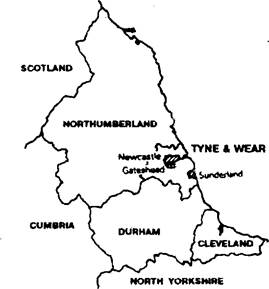
Northern accents
Date: 2015-10-07; view: 603.
Northern and Midland Accents
Midland accents, Yorkshire, for example. West Midland and North-West accents have very much in common with Northern ones. Therefore they are combined in this book into one group; peculiar realization of vowels and consonants will be marked, of course, when each subgroup is described separately.

The counties of northern England are not far from the Scottish border, so the influence of Scotch accent is noticeable, though there are of course many features of pronunciation characteristic only of northern English regions. The most typical representative of the speech of this area is Newcastle accent. It differs from RP in the following:
in vowels
1. RP [ʌ] is realized as [u]:love [lʌv] — [luv];
2. RP final [ı] sounds like [i:]: city ['sıtı] — ['siti:];
3. words like dance, chance which in RP have [a:] are pronounced with [æ]: [dæns], [ʧæns];
4. [ei], [ɜu]are either monophthongs, or much narrower diphthongs than the ones in the south of England, or they may even sound as opening diphthongs [ıe], [uo]: bay [be:], [bie], plate [ple:t], [plıet], boat [bo:t], [buot];
5. words that have "al" in spelling — talk, call, all, are pronounced with [a:]: [ta:k], [ka:l], [a:l];
6. RP words with [ɜ:] are pronounced with [ɔ:] in a broad Ty-neside accent: first [fɔ:st], shirt [ʃɔ:t]; so first, forced; shirt, short are homonyms;
7. [ai] is [ɛi]: right [rɛit];
8. words which in RP have [au] may have [u:], e.g. about ['əbu:t].
ln consonants
1. [1] is clear in all environments;
2. [h] is usually present in all positions;
3. -ing is [ın]: shilling ['ʃılın];
4. [p, t, k] between vowels are accompanied by glottal stop [ʔ]: pity ['pıtʔi:];
5. in parts of Northumberland and Durham [r] may be uvular (in its production the tongue and the uvular, not the tongue and the alveolar ridge take part).
| <== previous lecture | | | next lecture ==> |
| Southern English Accents | | | Yorkshire accents |